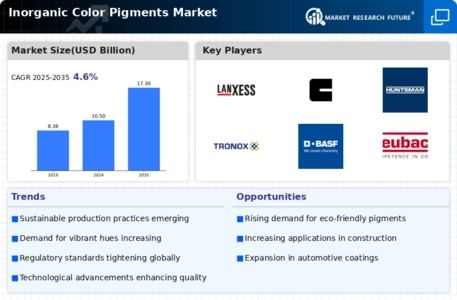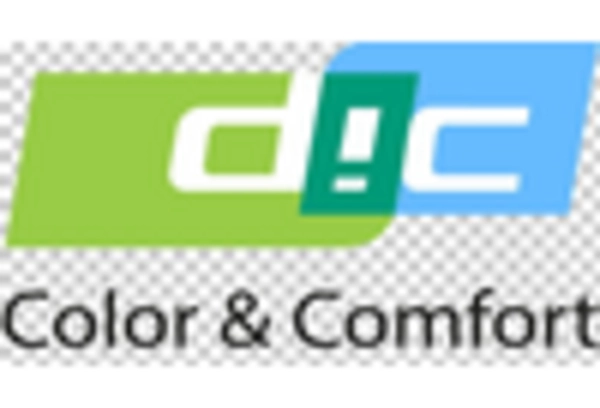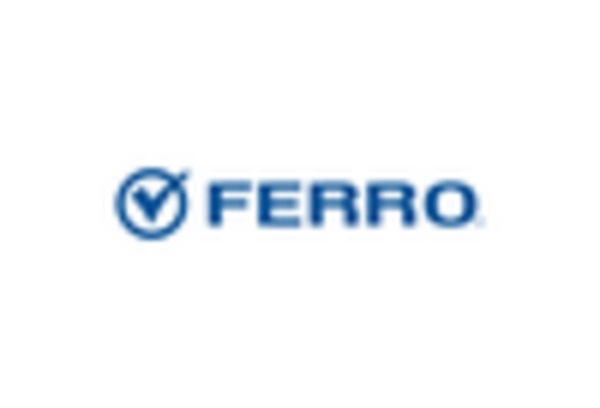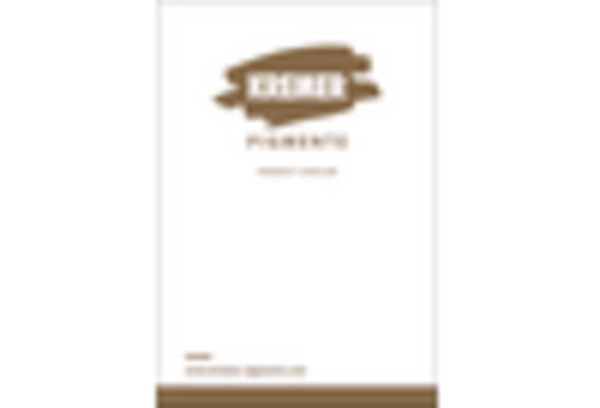Regulatory Compliance
Regulatory compliance is an essential driver influencing the Inorganic Color Pigments Market. Governments and regulatory bodies worldwide are implementing stringent regulations regarding the use of hazardous substances in pigments. Inorganic pigments, which are generally considered safer compared to their organic counterparts, are increasingly favored in various applications. Compliance with these regulations not only ensures product safety but also enhances marketability. As industries adapt to these regulatory changes, the demand for inorganic color pigments is likely to rise. For instance, the European Union's REACH regulations have prompted manufacturers to seek safer alternatives, thereby boosting the market for inorganic pigments. This trend is expected to continue, with the market projected to grow at a rate of approximately 3.5% annually, as companies prioritize compliance and consumer safety in their product offerings.
Diverse Application Areas
The diverse application areas of inorganic color pigments significantly contribute to the growth of the Inorganic Color Pigments Market. These pigments are utilized across various sectors, including construction, automotive, plastics, and textiles, owing to their excellent colorfastness and stability. The construction industry, in particular, is a major consumer, as inorganic pigments are used in paints, coatings, and concrete products. The increasing demand for decorative and functional coatings in residential and commercial buildings is expected to drive the market further. Additionally, the automotive sector's shift towards more vibrant and durable colors is likely to enhance the demand for inorganic pigments. As a result, the market is projected to witness a steady growth trajectory, with an estimated increase of 4% in the coming years, reflecting the expanding scope of applications for these pigments.
Sustainability Initiatives
The increasing emphasis on sustainability initiatives is a pivotal driver for the Inorganic Color Pigments Market. As industries strive to reduce their environmental footprint, the demand for eco-friendly pigments has surged. Inorganic pigments, known for their durability and non-toxic properties, align well with these sustainability goals. For instance, the market for inorganic pigments is projected to grow at a compound annual growth rate of approximately 4.5% over the next few years. This growth is largely attributed to the rising awareness among consumers and manufacturers regarding the environmental impact of synthetic pigments. Furthermore, regulatory frameworks are increasingly favoring the use of sustainable materials, thereby propelling the demand for inorganic color pigments. Companies that adapt to these sustainability trends are likely to gain a competitive edge in the Inorganic Color Pigments Market.
Technological Advancements
Technological advancements play a crucial role in shaping the Inorganic Color Pigments Market. Innovations in production techniques and formulations have led to the development of high-performance pigments that offer enhanced color stability and durability. For example, advancements in nanotechnology have enabled the creation of pigments with superior properties, which are increasingly sought after in various applications, including coatings, plastics, and construction materials. The market is witnessing a shift towards more efficient manufacturing processes, which not only reduce costs but also minimize waste. As a result, the market for inorganic color pigments is expected to expand, with a projected growth rate of around 5% annually. This growth is indicative of the industry's response to evolving consumer preferences and the need for more efficient and sustainable production methods.
Growing Construction Sector
The growing construction sector serves as a significant driver for the Inorganic Color Pigments Market. As urbanization accelerates and infrastructure development expands, the demand for construction materials, including paints and coatings, is on the rise. Inorganic pigments are preferred in these applications due to their excellent durability and resistance to fading. The construction industry's recovery and growth are expected to propel the demand for high-quality pigments, with a projected increase of around 4.5% in the market for inorganic color pigments. This growth is further supported by the trend towards sustainable building practices, where inorganic pigments are favored for their non-toxic properties. As a result, the inorganic color pigments market is likely to benefit from the ongoing expansion of the construction sector, reflecting a robust outlook for the industry.


















Leave a Comment